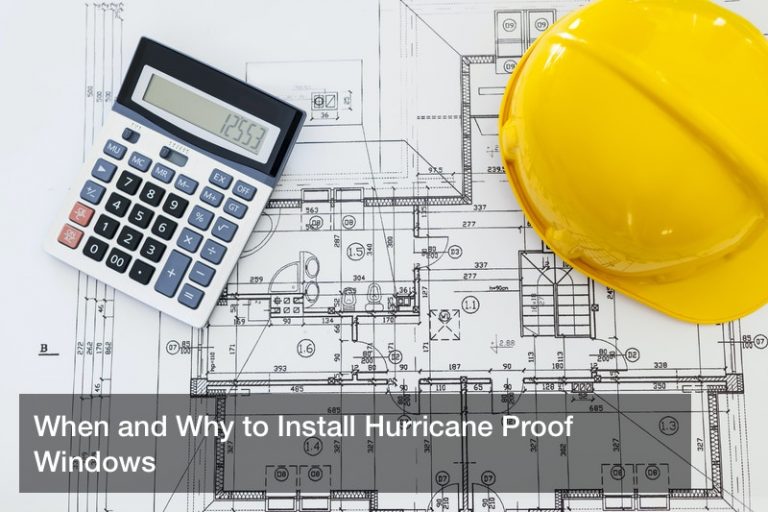
Whether you’re planning new construction or repairing a building that’s already sustained hurricane damage, now is the time to incorporate storm-proof, eco-friendly elements.
You may be wondering what type of siding to install alongside your hurricane-resistant windows. Building experts recommend fiber cement siding (also called Hardie board siding) because it’s so durable. Made of sand and cement, it’s both fire and water resistant. Fiber cement siding installation is common in areas susceptible to high winds and rain.
Now, let’s consider roofing. Many people ask, “Are metal roofs more energy efficient than shingles?” Metal reflects heat away from homes, lessening reliance on air-conditioning. Metal is also the preferred material for hurricane-prone areas. But installation and upkeep are easier with asphalt shingles. Plus, there are a variety of asphalt roof shingles styles to choose from. Asphalt roof shingles manufacturers rate their products in terms of durability. When shopping for asphalt roof shingles (or other types of shingles), look for maximum wind-resistant ratings of ASTM D3161 CLASS F or ASTM D7158 Class H. The highest impact-protection rating is UL 2218 Class 4. To make the most informed decision possible, consult a professional before you buy roofing supplies.
American buildings such as skyscrapers, office towers, condos, and hotels face a number of hazards, and along the east coast as Florida, Texas, and other states, hurricanes are a particular hazard to keep in mind. These powerful storms develop over the ocean and may move inland, where they pose a grave threat to buildings, property of all sorts, and human life. A hurricane may release vast amounts of power that can manifest as strong winds, flooding, and rain, and even tornadoes at times. Is is expensive to repeatedly rebuilt structures and fix property after a hurricane strikes, so contractors in Florida and similar states have learned to use hurricane resistant windows, hurricane sliding glass doors, and other glass door systems and high impact glass. These innovations may help make a building more resistant to damage from such storms, and hurricane resistant windows may be installed in new buildings to keep them safe from the very start. In other cases, hurricane resistant windows may be installed when a building’s windows are blown out and must be replaced.
The Power of Hurricanes

Meteorologists cannot actually prevent hurricanes or the damage that they cause, but scientists are hard at work to track how these storms develop to better allow other professionals to prepare for them and evacuate their paths. Many notable hurricanes have struck the American east coast and the Caribbean in the 20th century and so far in the 21st, and 158 total hurricanes struck the United States over the course of the 20th century. Florida alone received 57 of them, more than any other state, and Texas had the second highest total, at 26 total hurricanes. In 1992, Hurricane Andrew was distinctive for spawning nearly 62 different tornadoes, more than any other hurricane on record.
Meanwhile, many agree that hurricanes are becoming ever more powerful and frequent ever since the 21st century began, and 2017 saw 10 different storms in a row develop into hurricanes. Not since 1893 has this occurred, and Hurricane Irma in particular was devastating to the American coast and Caribbean. This storm contained an immense even trillion watts of energy, and it stands as the most powerful Atlantic hurricane on record. It was a Category 5 storm with winds as strong as 185 MPH blowing for 37 hours. It is little wonder, then, that Florida contractors must work with advanced and specialized materials to allow large buildings such as condos and hotels to survive such power. Nothing can prevent “Nature’s Fury” from striking, but the damage can be kept to a minimum. Windows and glass doors are a fine place to start.
Impact Glass Doors and Windows
Buildings caught in a hurricane have particular weak points: their windows and doors. Glass may shatter if struck with strong enough winds or impacted by wind-blown debris, meaning that ordinary windows and sliding glass doors may allow broken glass to fly everywhere during such a storm. This also allows rain water and winds to get into a building, causing even more damage and threatening human life as well. Much of the devastation of a hurricane is due to flooding, but strong winds are not to be ignored.
New buildings under construction may have hurricane resistant windows installed as the project continues, and any responsible project owner will call for such windows to prevent a liability during a storm. Window experts can be called in, and they will get these windows fitted in as needed. The same is true of sliding glass doors, since ordinary glass doors will also shatter and admit broken glass, water, and wind while a hurricane is blowing. This is no ordinary glass; windows and doors which have an impact-resistant glaze system with +105/-130, and they can endure hurricane winds as strong as 100 MPH, a necessity for hurricane-prone areas such as Miami and the rest of Florida’s cast. The owner of an older building may want to get their windows inspected, and if these windows do not meet current standards of resisting hurricanes, then the owner may call for specialized window contractors who can have hurricane resistant windows put in. This is a fine investment since it may prevent a lot of property damage the next time a hurricane strikes the area.
